As the 2022 New York Fashion Week kicks into high gear, the New York Embroidery Studio—a fixture of the city’s Garment District for two decades—is buzzing.
Technicians operate lasers that cut patterns onto fabric. Craftspeople hand sew pearls onto blouses. Vintage machines embellish gowns with sequins. In a matter of hours, these outfits will appear on the runways of designers like Thom Browne, Alexander Wang, Tory Burch, and Kerby Jean-Raymond.
The Studio is the brainchild of Michelle Feinberg, who opened it in 2002. Today, the Garment District location is staffed by 150 workers, and a newly opened 80,000-square-foot facility in the Brooklyn Army Terminal will soon create more than 500 jobs.
The NYES tells a larger story of how fashion in America has evolved over the last two decades. Feinberg has seen her competitors close their operations, unable to compete with cheaper labor in Asia; hers is now the last remaining embellishment factory in New York. More recently she’s watched the pandemic pummel the apparel sector, as fashion shows were halted and consumers stopped buying clothes.
But as her studio cranks back up to full capacity this week, Feinberg is seeing New York City’s fashion industry come back to life.
When Feinberg launched the New York Embroidery Studio, she had already worked more than a decade in fashion manufacturing. As a student at the Fashion Institute of Technology in the late 1980s, she landed a job at the century-old business Manhattan Scalloping, which focused on embellishing—or adding decorative features—to garments. When it shuttered in 1999, Feinberg worked for the company that bought its machinery, Mona Slide Fasteners, which was founded in 1944.
These companies specialized in embellishing mass-market garments for local department stores. At the time, there was enough embellishing work in New York to support many manufacturing businesses.
“We were working 24 hours a day,” she recalls. “We couldn’t find enough workers; we had to hire [incarcerated] people out of work release. There were several competitors within my own building. We had a camaraderie. I would go up and down asking if they had a particular kind of thread I could borrow or an elastic strip.”

NYES employs 150 workers in its Garment District workshop (pictured here). Once it’s fully up and running, the Studio’s new Brooklyn Army Terminal factory will have created more than 500 jobs.
But in the ’90s, things began to change. China was emerging as a global manufacturing hub with expertise in apparel. Mass-market fashion companies realized they could make their products more cheaply overseas, so one by one, factories in the Garment District began to shut down. Feinberg began receiving job offers to go to Asia to teach the local workers how to use machinery and sew embellishments.
But Feinberg wanted to start a family, so she decided to stay put in New York. It was 9/11 that prompted her to start her own business. Mona Slide was about to relocate to the Bronx, but in the wake of the attack on her city, Feinberg was committed to keeping the Garment District alive.
Feinberg opened NYES in 2002. “We were born out of 9/11,” she says. “I’ve been working on 36th Street for more than 30 years now. I’ve had a front-row seat to seeing how the fashion industry in New York has changed.”
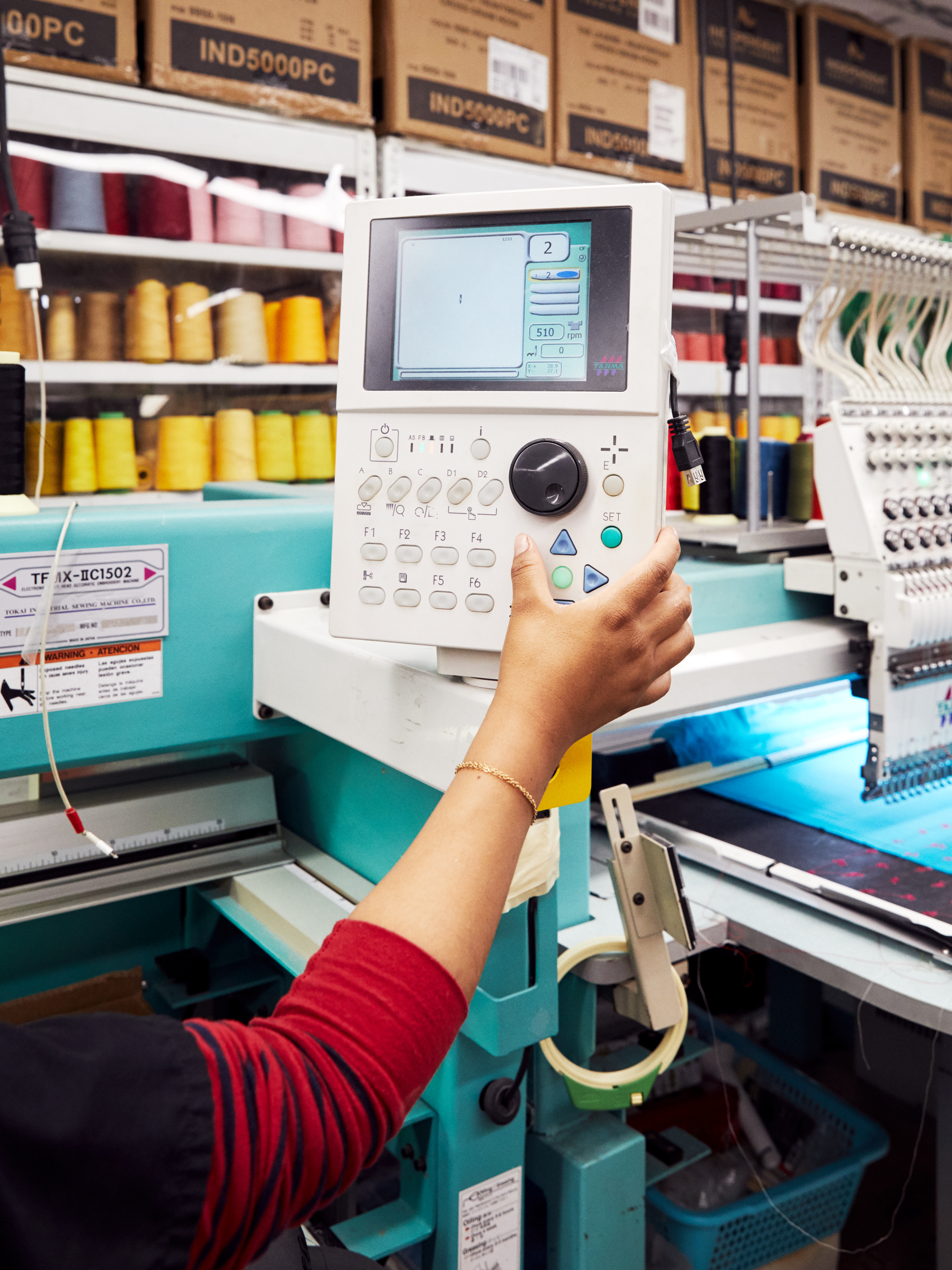
NYES houses state-of-the-art equipment, like this digital embroidery machine.
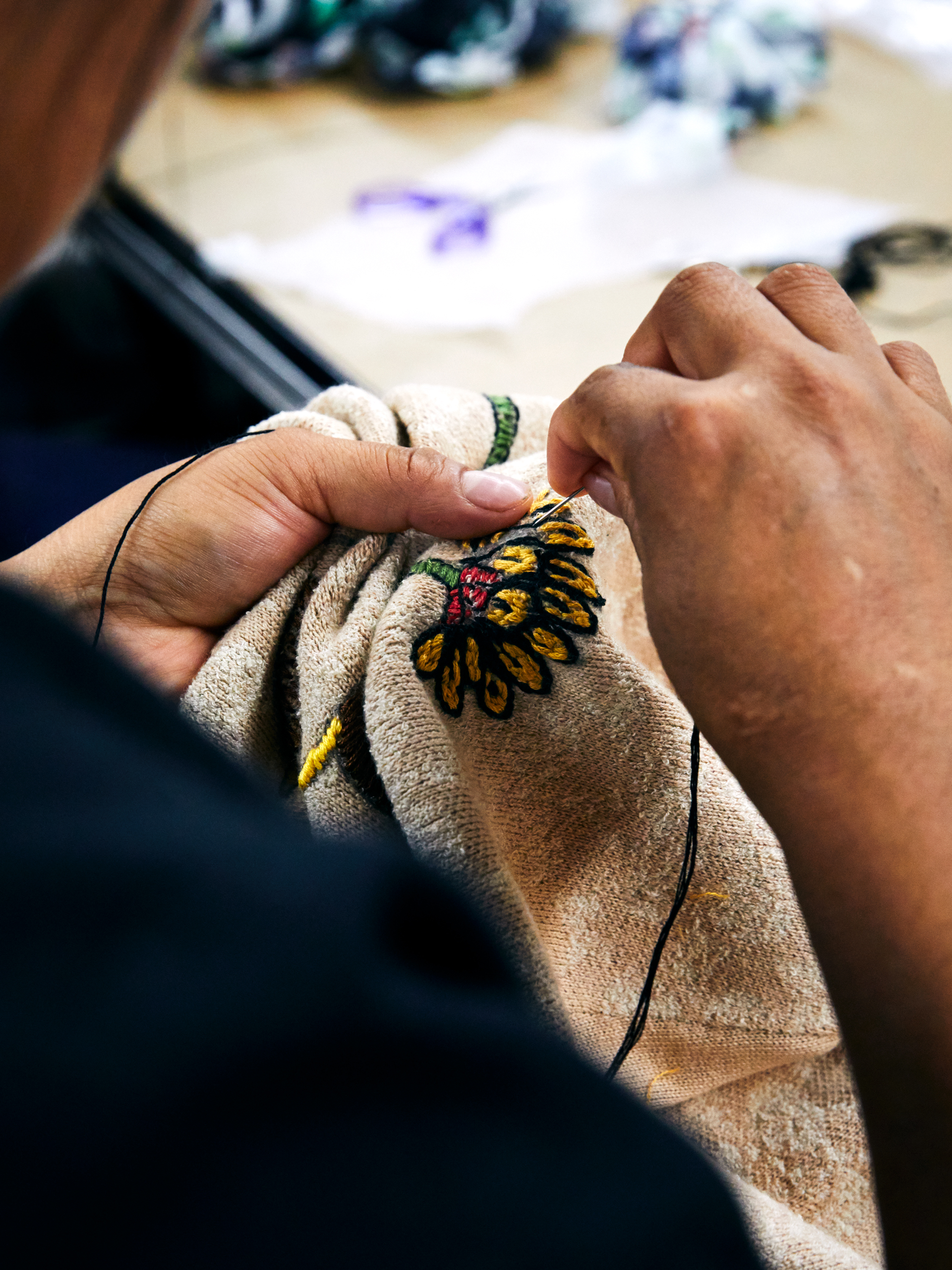
But much of the embellishment is still done by hand.
When she opened NYES, Feinberg made the strategic decision to work with high-end designers like Alexander Wang and Marc Jacobs instead of cheaper department store brands. Over time, she developed a network of similar clients.
“Twenty years ago, I had a fleet of door-to-door salesmen going to brands,” she recalls. “But now, it’s all word of mouth. Designers are transient; they flow from brand to brand and take me with them.”
To stand apart from competitors, Feinberg has to be able to do jobs quickly. Designers often come to her at the last minute to discuss a creation of theirs. Feinberg and her team have input in the creative process, offering ideas about what embellishments to incorporate or whether to use a novel technique like laser cutting. Today, NYES offers an enormous portfolio of techniques to its clients.
NYES’s craftspeople often work around the clock to get the garments ready on time. For all of the high-tech equipment the company owns, much of the work is still done by hand. “If I am going to compete with Asia, I need to be faster and more agile,” Feinberg says.
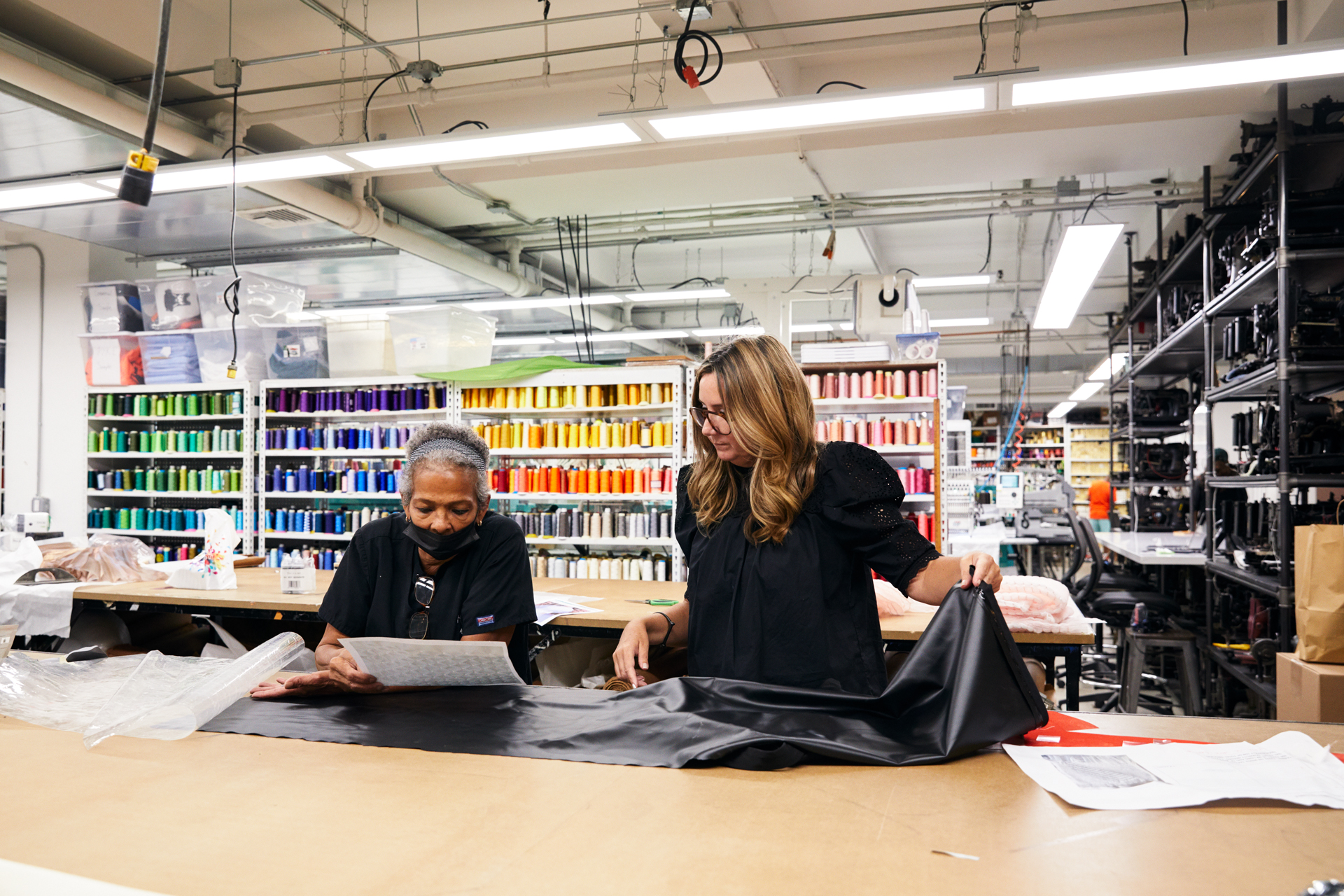
Feinberg and Vicki Cruz, floor manager at NYES. During New York Fashion Week, the team often works around the clock.
While NYES is largely focused on creating high-fashion pieces for showing off at New York Fashion Week and the Met Gala, Feinberg has also expanded into creating costumes for TV, movies, and Broadway. Recently, the Studio made costumes for Amazon’s period comedy-drama The Marvelous Mrs. Maisel, using machines that were current in the 1950s. NYES also created replicas of late-19th-century garments for the HBO series The Gilded Age.
But when the pandemic struck, NYES’s operations ground to a halt, much like the rest of New York’s fashion industry, yet Feinberg was desperate to keep her workforce employed. Early in the crisis, she realized that she could pivot her operations to creating personal protective equipment for frontline workers. “I have talented and skilled people who have stayed up till 3 a.m. to get clothes ready for a Marc Jacobs show,” she says. “I had really no other choice to but to provide them with jobs.”
Feinberg got a major federal contract to create plastic face shields and gowns that protect medical workers from bodily fluids and pathogens. This new stream of work helped her business weather the storm and, in fact, grow. Today, NYES continues to manufacture PPE for the city’s healthcare workers. “If the Garment District can maintain a percentage of government contracts, it will allow fashion manufacturing to keep riding waves of instability in the future,” she says.
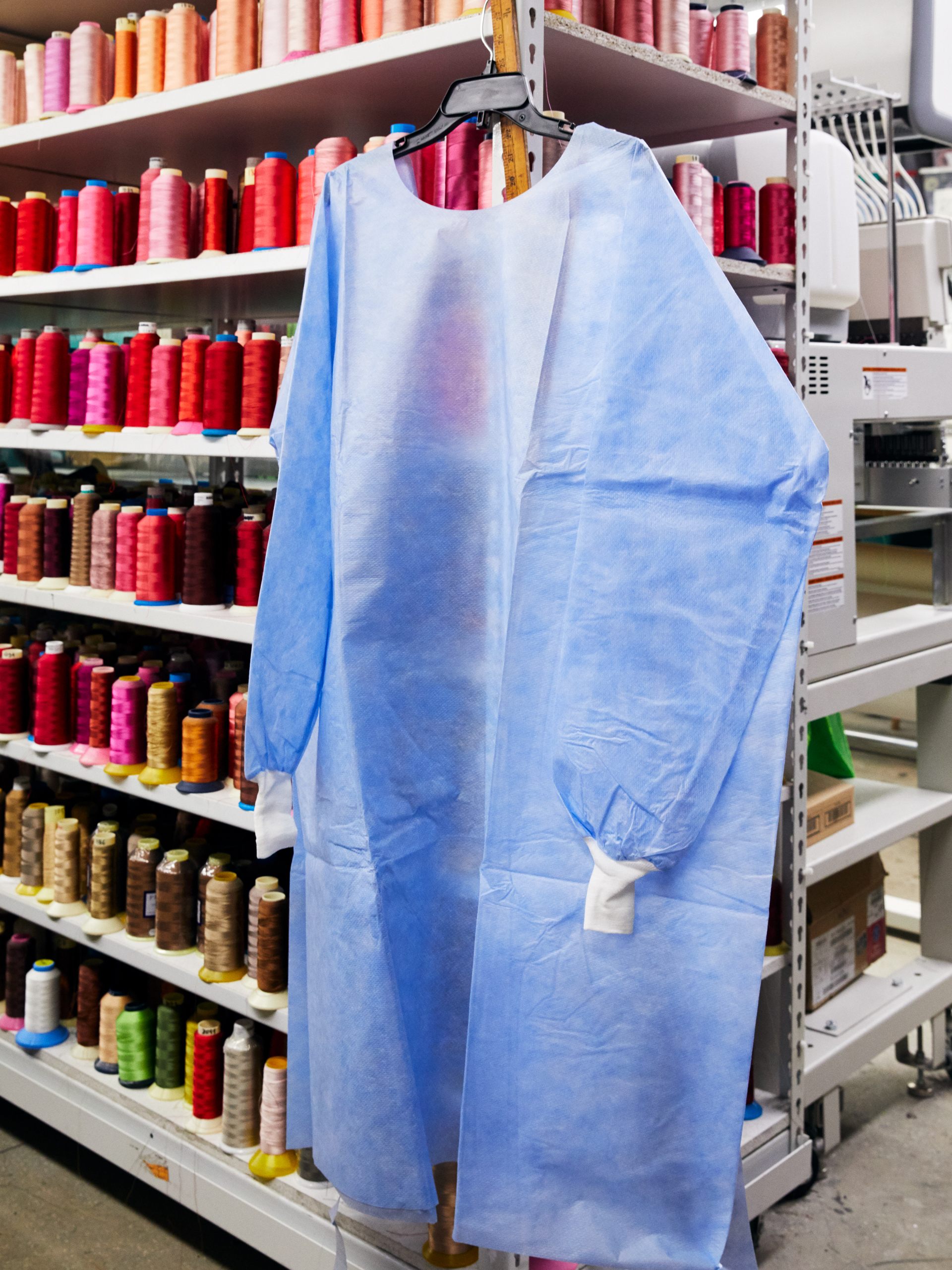
During the pandemic, NYES pivoted to making gowns for medical workers.

It has a large portfolio of fabric-embellishment techniques.
In the run-up to this year’s Fashion Week, Feinberg observed New York designers returning to the pace of pre-pandemic life after two years. NYES is running at full capacity and employees are again working till all hours of the night to get outfits ready for the runway. It’s hectic, but Feinberg loves it because it’s a sign that New York fashion is back.
“When I graduated from college, I could never have imagined all the things I would get to do in my career,” she says. “One day, we’re making a gown that protects a doctor from the pandemic. The next, we’re making a 3D dress for Thom Browne that Lizzo will wear to the Met Gala.”

The studio has vintage machines that create authentic looks from earlier eras.
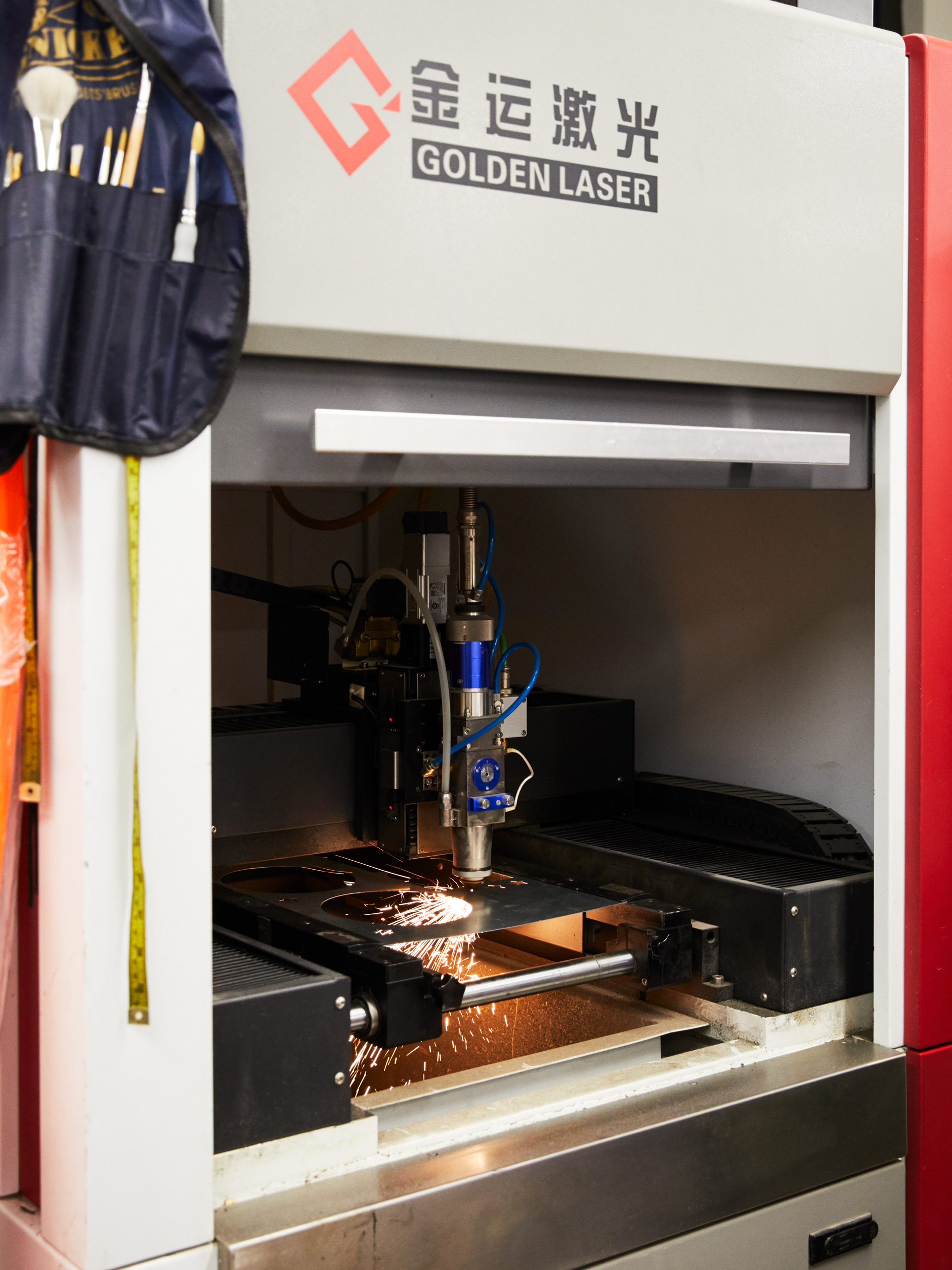
It also has the latest laser equipment that cuts metal with precision.
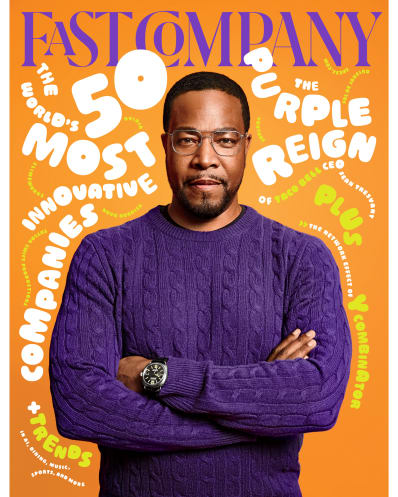












 Fastcompany.com adheres to NewsGuard’s nine standards of credibility and transparency.
Fastcompany.com adheres to NewsGuard’s nine standards of credibility and transparency.